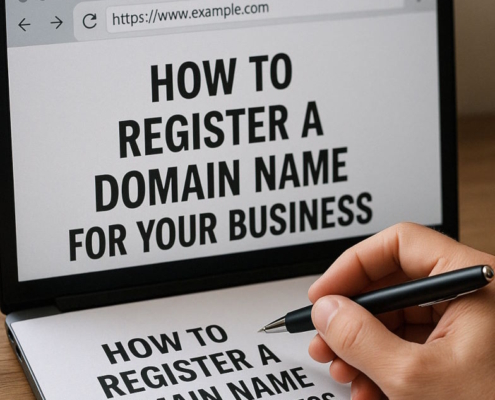What is the purpose of a business development plan?
Most people aren’t sure what they should be doing when they’re first starting out in growing their business. It is common to feel lost, especially when it is time to draft a business development plan.
It could be that you are not sure what a business development plan really is. And as you research the subject, you only dig yourself into a deeper hole. Sure, there is plenty of information online, but there may be very little offering step-by-step instructions on how to write a business development plan.
So, here’s a handy guide going over how to create a business development plan for your company, including what information to include. But before we begin, let’s go over the definition of a business development plan.
A business development plan is a document that guides you through the process of putting your company growth strategy into action. It involves extensive market and consumer research. But it also contains additional elements like your buyer persona and rivals.
A business growth plan, then, is a thorough outline of the critical actions you intend to do in order to expand your company. A business development plan is a dynamic document, which is an important thing to keep in mind. This means that you must constantly revise your plan in light of fresh knowledge about the circumstances around you. This guarantees that the study contains high-quality insights while also assisting you in improving your strategy.
Two primary sections comprise a business development plan:
- Research: During this stage, you will gather additional information about your target audience, your industry, and your rivals.
- Action: You do something with the information you’ve gathered. In particular, this means coming up with a value proposition, producing content, and trying out concepts.
Step 1: Prepare your business development plan
Information should be arranged in a methodical, easy-to-understand, and effective manner. It may seem simple, but having a proper file that you can review every day should be your first priority.
It is not required to include all of the information. Keep it brief by include only the most important information that will enable you to create a company growth machine that works. Make sure that your business development plan is simple to find and read.
You don’t have to get fancy and start searching for the newest software that claims to save you a ton of time in this regard. Stick with something simple but effective. When it comes to your business development plan, Google Sheets is your best friend.
Therefore, a business development plan’s primary objective is to keep data organized so that you may more easily identify areas for growth.
Step 2: Research the market
One of the first steps in a business growth strategy is market research. The purpose of the activity is to learn more about the demands and preferences of the consumers. Many businesses ignore this phase because they believe their gut will lead them through their difficulties. Although intuition might be useful, study and facts are still necessary to better understand your clients.
After all, intuition is where most ideas originate. But in company growth, it’s never a good idea to build a whole plan on assumptions. Therefore, before you begin working on your company development strategy, make sure you complete your research and always make educated predictions.
Three factors are considered in market research. These will let you know how big the market you’re aiming for is in reality.
- Total Available Market (TAM) or Total Addressable Market
The TAM essentially shows you how much yearly income is available for your product or service, taking into consideration the whole market you’re operating in.
Now, the first setback may be obtaining this information. In fact, a large number of people focus their careers around market research.
You may discover this information by searching Google. Naturally, though, you must first identify what you’re looking for. In this situation, the information you want is essentially the number of businesses or individuals that might profit from your offering.
In terms of services and location, you also want to know how many businesses are in your local area. Try searching for “your industry market trends,” “your market report,” or “your industry report” on Google to get relevant market news.
This kind of study receives substantial funding from many large consulting firms and government agencies. It’s a solid and trustworthy place to start.
TOP TIP:
Pick your sources wisely. You’ll come across a lot of irrelevant material, so learn to sift through it.
- TSM, or Total-Served Market
After determining the size of your market, you must determine the proportion that your rivals now service.
In this instance, the data you need focuses only on your rivals. The first thing you should do is figure out how many you have.
After that, you have to determine their level of performance and begin gathering as much data as you can.
You need to find out how many customers your rivals say they have, how much money they make, and where they are located.
To find your competition, start by searching for keywords on Google. You may then start exploring their websites further to obtain more in-depth information. Larger rivals will probably receive favorable news attention.
Finally, don’t undervalue the significance of websites with user reviews. Customers can find a lot of important information that your rivals would rather not provide. Also, don’t forget to use technology to help you with your study.
- Serviceable Obtainable Market, or SOM
Quantifying the amount you can actually achieve with your business development plan is the final phase in your market research process.
Your market share is your SOM. In other words, you cannot expect a whole market to purchase solely your goods and services. A certain group of people will purchase from your business. Your SOM, then, is your market share and the potential clients who would buy from you if they believe your goods or services will benefit them.
SOM considers your competitors as well as market information and brand awareness. It aids in both client acquisition and earnings forecasting. You learn what your rivals are putting on the market based on the study. Additionally, you will be able to modify your offerings to accommodate your clients’ requirements and tastes.
Step 3: Analysis of competitors
Analyzing your competitors is the third phase in designing your business development plan. We have already covered market research and how it may help you better understand your target audience’s preferences. However, it’s also critical to assess your competition if you want to build your company profitably and sustainably.
Determine who your indirect and direct rivals are first. In order to uncover all of the companies who compete with you in your market, try to find their IDs in a Google search. The “About us” section of the website contains this information. Finding important individuals, including managers and executives, is the next goal.
You can go on to services and goods after you have this data. The website of your competitor also has this information. This particular section outlines the company’s areas of expertise. With the use of this data, you can evaluate your products against those of your rivals and look for methods to make them better.
Proceed by examining their clientele and the costs associated with their goods and services.
TOP TIP:
Examine your rivals’ client reviews to identify their advantages and disadvantages. Use the information to make your offer better.
Step 4: Research on customers
You may begin considering the type of clients you are attempting to sell your goods and services to inside this market segment after determining your market share.
Doing thorough consumer research is the best method to address this as it will provide you your buyer persona and ideal client profile.
It truly helps you realize who you’re speaking to. How to go about it, though? Start by examining your current customers, assuming you have any. It is your goal to learn more about their identity, activities, and habits.
For instance:
- What are these people’s job titles?
- What is their age?
- What are their methods of communication?
- Where do they spend their time?
- What kind of personality do they have?
- What obstacles do they face?
- What are their everyday activities?
Just looking through social media accounts can provide you with all of this information. Really, you can learn a lot about someone just by looking at their social media accounts! You’ll begin to notice trends if you take the time to check a few of them—at least ten.
Next, review a few job descriptions of the individuals you are trying to reach. This will emphasize their professional duties and the ways in which your product or service may support them. Finally, doing a survey is usually a good idea.
Step 5: Create a buyer persona
You may now develop your consumer persona immediately upon the completion of your customer research.
Based on data and study, the buyer persona is a semi-fictional depiction of your ideal clients.
You must include all of the useful information you discovered throughout your consumer research into your buyer persona.
Step 6: Value Propositions
The consumer research brings your business development plan’s research section to a close. It’s time to start implementing your findings and creating your business development plan.
The value proposition is the first important asset you should develop. A value proposition is what your clients will receive if they decide to purchase your goods and services. Using the value proposition on your website, sales calls, social media postings, and other platforms will help you convey your company’s worth. If you want to reach your target market and convince prospective clients to collaborate with you, you need a compelling value proposition.
Good value propositions are built on that, and you should have all the information you need if you followed all the steps.
We are going to use the Job-To-Be-Done structure to develop a value proposition. This allows you to determine your buyer persona’s obligations as they are performing their duties.
Finding the proper talent, for instance, is a common duty of a recruiter.
Second, think about your clients’ struggles and successes. Consumers typically base their purchasing decisions on their feelings. They affect their purchasing habits, frequency of purchases, and the businesses they patronize.
Because you can instantly connect your solution to a specific problem that your clients are experiencing, challenges in particular are an essential component of your value proposition.
Let’s return to the recruiter scenario, for instance. We are aware that identifying talent is one of a recruiter’s primary duties. Having enough time to review all of the resumes they get each day is a significant barrier for recruiters.
Let’s now imagine that you are employed by a business that offers hiring software that has the ability to automatically screen resumes.
In this instance, a strong value proposition might sound like this:
Use our recruiting software to cut down on the time it takes to screen resumes by 70%.
Step 7: Plan your content
The next stage is to communicate your value proposition to your target market. At this point, having a content strategy becomes essential.
You may better plan the kind of information you want to provide your audience by using a content strategy. Additionally, it assists you in choosing the platforms to establish your presence on.
When writing blogs, emails, or articles, you must have a strong understanding of your target audience in order for the material to be effective. Therefore, before producing any material, always refer to your customer persona.
Effective content centers on the previously identified pain area, just like value propositions do. Make use of them to draw in your audience and offer insightful knowledge that can ease their suffering.
By doing this, you will become known as a valued resource and be the first thing people think of when they need help with their problems.
Step 8: Trials
Your business development plan’s last phase is all about being creative and looking for opportunities. At this point, we design trials to verify some of our business hypotheses. Ideas for your experiment should be ones that you believe will help your business expand sustainably.
After you have a few ideas, decide on some objectives and establish the procedure you will use to conduct this experiment. For instance, if you’ve heard about a new social media platform and believe your audience may be active on it, do an experiment to see whether this is accurate and if it might help you achieve your goals.
Give this concept a target, such as producing ten qualified leads through this new channel.
Next, choose the duration of the trial, ideally a few weeks. After the experiment is finished, evaluate the results. You should increase the scope of this endeavor if the pilot study yielded positive results. If not, use what you’ve learned to make changes.
An overview
One important tool for mapping your ecosystem and organizing your company development activities is the business development plan.
There are two parts to it: research and action. You examine your market, rivals, and clients in the first section. In the second, you create value propositions, content strategies, and tests based on your insights.
You must update the company development plan as you gain new information because it is a dynamic document. Naturally, in order to ensure that you are on the correct path, you must employ it in your day-to-day activities.






























